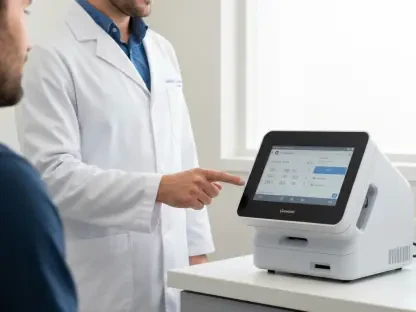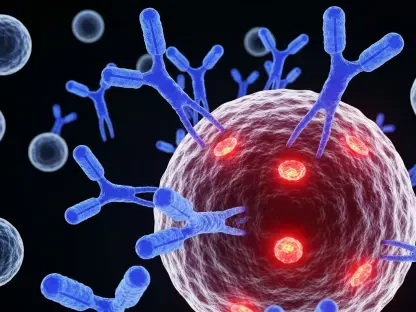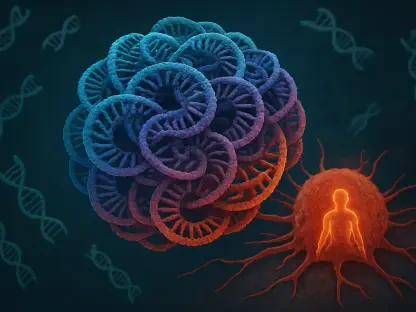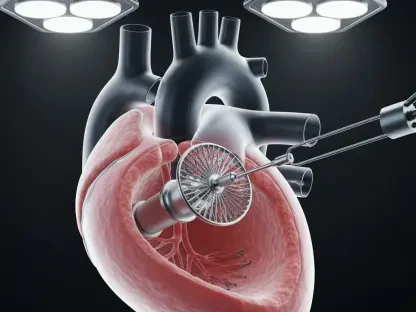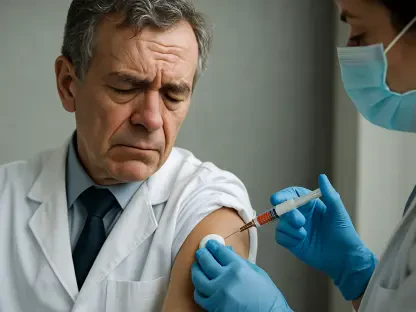In the ever-evolving field of biotechnology, cell and gene therapy offer unprecedented potential to treat diseases once considered untreatable. However, recent evidence suggests that the conventional methods of culturing cells might be hindering progress. Researchers are now reconsidering the oxygen (O2) concentration used in cell culture because the non-physiological O2 levels that have been standard could negatively affect cell development and the efficacy of resultant therapies.
Importance of Physiological Oxygen Levels
Current Normoxia Practices
Traditionally, mammalian cells are cultured at atmospheric oxygen levels of around 20-21%, a practice defined as normoxia. This standard, however, deviates significantly from the actual O2 concentrations encountered by cells in vivo, which typically range from 2% to 11%, depending on the tissue type. Stem cell niches, for example, usually exist in environments with O2 concentrations between 3% and 6%. Some tissues, such as the thymus and certain regions of the kidney, can have O2 levels that drop below 1%, especially in pathological conditions.
This stark discrepancy between in vitro and in vivo O2 levels is more than a simple numerical mismatch; it has profound implications for cellular behavior and function. Cells depend on physiological O2 levels for proper development. Deviation from these levels during culture can lead to various adverse outcomes, including unpredictable metabolic profiles, altered gene expression patterns, and irregular proliferation rates. Such inconsistencies can significantly affect the reproducibility and safety of cell-based therapies, as cells cultured at non-physiological O2 concentrations might develop chromosomal abnormalities and genomic or epigenomic aberrations.
Impact on Cellular Function
Oxygen levels are not merely a background condition in cell cultures; they play a crucial role in shaping cellular functions and behaviors. For instance, cells cultured for extended periods under atmospheric O2 conditions exhibit altered metabolic processes compared to those cultured under more physiologically relevant hypoxic conditions. These changes lead to the development of cells that may not accurately mirror the therapeutic qualities required for effective treatments. Chromosomal and genomic changes that arise under normoxic conditions complicate the production of reproducible cell therapies and potentially jeopardize the safety of the final therapeutic product.
Conversely, hypoxic culture conditions more accurately mimic in vivo environments and offer noteworthy therapeutic benefits. Research has shown that culturing cells such as mesenchymal stem cells (MSCs) under hypoxic conditions can improve growth rates, enhance genetic stability, and elevate overall therapeutic potential. This is vital for advanced therapies aimed at treating complex diseases. Furthermore, tailoring O2 levels in the cell culture can offer early insights into the therapeutic efficacy of the cells being cultured, which is critical in advancing next-generation therapies, particularly in cancer treatment.
Advances in Hypoxic Cell Culture
Benefits for Mesenchymal Stem Cells
Culturing mesenchymal stem cells (MSCs) in hypoxic conditions is emerging as a promising strategy to boost their therapeutic potential. MSCs grown under lower O2 concentrations exhibit improvements in various facets, including enhanced proliferation rates, better genetic stability, and increased effectiveness when used in therapeutic applications. For instance, the hypoxic environment contributes to the maintenance of stemness in MSCs, a crucial factor for their regenerative capacities. This helps in ensuring that these cells can differentiate into the required cell types when employed in treatments for damaged or diseased tissues.
Moreover, hypoxia-driven gene expression modifications render MSCs more resilient and functional, paving the way for improved outcomes in regenerative medicine. These improvements bolster the cells’ innate capacities to repair and regenerate tissues effectively. Scientists have observed that MSCs grown in hypoxic culture exhibit a superior ability to modulate immune responses, contributing further to their therapeutic efficacy. Thus, the adaptation of hypoxic cell culture practices could significantly enhance the quality and safety of MSC-based therapies.
Insights into CAR T-Cell Therapies
When it comes to chimeric antigen receptor (CAR) T-cell therapies, mimicking the hypoxic conditions of the solid tumor microenvironment is critical for optimizing their performance. CAR T-cells cultured under low O2 levels similar to those found in solid tumors often show early indications regarding their effectiveness in targeting cancer cells. Hypoxia tends to impair CAR T-cell expansion, differentiation, and cytokine production, which are essential functions for effective cancer treatment. These insights are key as they facilitate iterative improvements in CAR T-cell design and function, thereby enhancing the prospects of successful cancer therapies.
In addition, understanding how CAR T-cells respond to hypoxic conditions can aid in the development of strategies to overcome these challenges. For instance, modifying CAR T-cell culture protocols to optimize O2 concentrations could fortify their cancer-targeting capabilities. Advances in CO2 incubator technologies have made it feasible to regulate O2 levels with precision, providing a controlled environment that mirrors the solid tumor microenvironment more closely. This level of control ensures that the cultured CAR T-cells retain their desired characteristics and therapeutic capabilities.
Technological Innovations in Cell Culture
Enhanced Incubator Designs
Modern technological advancements in CO2 incubator design and function have significantly improved the capacity to regulate O2 levels in cell cultures. These state-of-the-art incubators enable researchers to achieve precise control over O2 concentrations through the introduction of nitrogen and the use of advanced zirconia sensors. The capability to finely tune O2 levels, alongside CO2 levels, without requiring additional expensive equipment, marks a leap forward in the field of cell culture.
The ability to control the O2 environment within cell cultures directly addresses the need to replicate physiological conditions more accurately. Researchers can now create specific culture conditions that emulate the in vivo environment of the cells being studied or treated. Such tailored conditions not only enhance the quality and reproducibility of the research but also open new avenues for developing safer and more effective cell-based therapies. The increased control offered by these advanced incubators supports the growth of therapeutic cells, ensuring their properties are preserved and optimized for medical applications.
Future Implications for Research and Therapy
In the rapidly advancing field of biotechnology, cell and gene therapy present unparalleled potential for addressing diseases that were previously deemed untreatable. However, recent findings indicate that traditional methods of culturing cells may be impeding progress in this innovative area.
Researchers are currently reevaluating the oxygen (O2) concentration employed in cell culture procedures. It turns out that the non-physiological O2 levels, which have long been the norm, might be adversely impacting cell development and, consequently, the effectiveness of the resulting therapies.
This reconsideration is crucial because maintaining an environment that closely mimics physiological conditions is essential for the optimal growth and function of cultured cells. By adjusting oxygen levels to better reflect those found in the human body, scientists hope to enhance the efficiency and success rates of cell and gene therapies. This shift in methodology could accelerate breakthroughs in the treatment of complex diseases, ultimately leading to more effective and reliable therapeutic options for patients.



